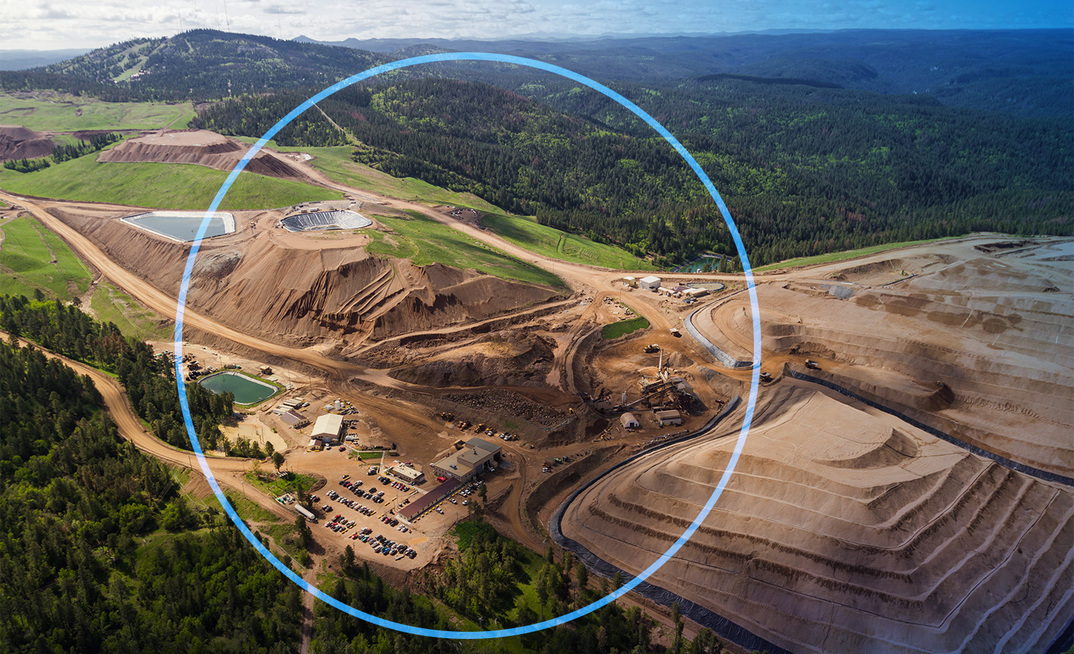But for smart miners, Virtual Twin represents perhaps the most powerful and dynamic way to simulate real-life mining operations, make changes in real time and ultimately create the ways and means to re-engineer value chains.
You may think of Virtual Twin as a superset of Digital Twins. The Digital Twin approach is a way of simulating a vertical process or object that tends to stay within that sphere, focusing on an area such scheduling, production or plant operations. Virtual Twin hyperextends that approach to connect silos, letting operators visualise, model and simulate the end-to-end holistic environment to unleash innovation across the full lifecycle.
In Virtual Twin, a 3D digital model is designed to represent the shape, dimensions and other properties of a physical product or system. Then simulations are run on that virtual model to test how the product will run when assembled and operated in various environments or how it will respond to various events or external stimuli. Unlimited tests can be applied to optimise and validate the design, choice of materials and production processes.

Glenn BARLOW, GEOVIA Industry Process Expert Director, Dassault Systèmes
Virtual Twin is both ‘broader' and ‘longer' than Digital Twin. Data is effectively democratised by being spread across value-chain stakeholders rather than being the sole domain of a process or object owner. Any user with appropriate access permissions can make use of Virtual Twin data and that is a powerful recipe for innovation and a basis for process re-engineering and business change management. Operators can track who is using the model and how, with audit trails, issue tracking and resolution and other activities all transparent. Over time, just as with AI, the model should improve iteratively as positive changes kick in so for example root-cause analysis can be applied based on more and precise criteria, and a knowledge base and ontology can evolve.
Benefits and challenges
The key benefits of successful Virtual Twins deployments are clear: the ability to move fast, try ideas out safely without physical risk and to make process changes without environmental harm being occasioned. In other words, it's a route to all our futures - smart mines.
Currently, it's fair to say that Virtual Twin users are early adopters but they are not merely examples of the joke that sees pioneers suffer arrows in their backs. They are already seeing competitive differentiation from their investments in the cutting-edge technologies involved and making fast progress towards the mines of the future.
Of course, there are challenges though: let's examine some of them.
As so often with change projects, data management practices once again come under the magnifying glass. Any simulation can only be as good as the data that goes into it, following the GIGO principle: garbage in, garbage out. Virtual Twin models attempt to enforce clean data being ingested by providing a series of guardrails and requirements but data management still requires discipline and rigour. This is especially the case where complex integration with other systems is needed, where it's crucial that the same object descriptions, standards and metadata can be applied and exchanged.
Another perennial obstacle is change management. Under Virtual Twin, people need to work in new ways, root out bad habits and apply new best practices. Getting them to apply these is a case of managing down and across even more so than managing up to gain spend approval. Companies implementing Virtual Twin are making sharp adaptations to processes and ways of working… and most people don't like change. This places the onus on great communications, explaining why this is the way forward and reassuring people that they still have a future even if their roles change.
Almost as big a challenge is another familiar aspect, that of skills. In IT generally, the conundrum is that finding people with the right skills is tough and keeping them is at least just as tough. So, it's incumbent on miners pushing the technology envelope to recruit well, to build continuous learning into their own academies of talent and to source skills from the right partners where needed.
Connectivity is a final challenge but one that is being chipped away at. Improvements to cellular communications, WiFi, sensor computing and satellite help, but just as important are opportunities to tap into server-side computing and, where governance rules and laws allow, to use cloud as a hub repository and clearing house.
Progressive miners know all this and are ready for the challenges of Virtual Twins because the upside of successful deployment and operations is vast. Consider the remarkable success of Bouygues in, quite literally, reshaping the face of modern construction as an iconic example of what is possible. The company used the Dassault Systèmes 3DEXPERIENCE® platform to try out new working methods and improve the way all stakeholders in this project collaborated across the value chain. They tapped into the power of Virtual Twin and collaboration to move faster, design better the first time and protect the safety of staff. They will pursue strong processes relentlessly, embrace complexity and instill repeatability. Also, they will empower their people to explore new technologies, innovate and benefit from future opportunities. In conclusion, their objectives and those of miners looking to innovate are well aligned.
FIND OUT MORE
Join the GEOVIA User Community, by Dassault Systèmes to read about industry topics from experts, be the first to know about new product releases and product tips and tricks, and share information and questions with your peers. All industry professionals are welcome to learn, engage, discover and share knowledge to shape a sustainable future of mining.
ABOUT THIS COMPANY
Dassault Systèmes GEOVIA
GEOVIA delivers end-to-end digital solutions focusing on the intersection of natural resources, infrastructure and the built environment. We empower a diverse community of geoscientists, mining engineers, and geospatial specialists to access the information and insights they need to make informed decisions. These decisions balance economic, environmental, and social considerations, ensuring the responsible use and development of the Earth’s resources and territories.
As part of the 3DEXPERIENCE platform, GEOVIA makes it possible to create virtual twins of the Earth’s surface, subsurface and infrastructure that enable users to build a better future. By Analyzing and visualizing the impacts of their decisions through a dynamic and comprehensive view of assets and processes, GEOVIA helps to improve operational efficiency and optimize resource utilization.
GEOVIA is driven by a vision to model a sustainable future where technology, knowledge and know how play a crucial role in promoting responsible natural resources management, improving the quality of life for all people, and safeguarding the planet for generations to come.
Europe/Middle East/Africa Dassault Systèmes:
- Address: 10, Rue Marcel Dassault, 78140 Vélizy-Villacoublay, FRANCE
- Tel: +33 (0)1 6162 6162
- Website: www.3ds.com/products/geovia
- Email: GEOVIA.Info@3ds.com
























